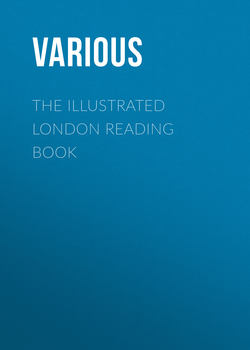Читать книгу The Illustrated London Reading Book - Various - Страница 37
THE INVISIBLE WORLD REVEALED BY THE MICROSCOPE
ОглавлениеA fact not less startling than would be the realisation of the imaginings of Shakespeare and of Milton, or of the speculations of Locke and of Bacon, admits of easy demonstration, namely, that the air, the earth, and the waters teem with numberless myriads of creatures, which are as unknown and as unapproachable to the great mass of mankind, as are the inhabitants of another planet. It may, indeed, be questioned, whether, if the telescope could bring within the reach of our observation the living things that dwell in the worlds around us, life would be there displayed in forms more diversified, in organisms more marvellous, under conditions more unlike those in which animal existence appears to our unassisted senses, than may be discovered in the leaves of every forest, in the flowers of every garden, and in the waters of every rivulet, by that noblest instrument of natural philosophy, the Microscope.
Larva of the Common Gnat.
A. The body and head of the larva (magnified).
B. The respiratory apparatus, situated in the tail.
C. Natural size.
To an intelligent person, who has previously obtained a general idea of the nature of the Objects about to be submitted to his inspection, a group of living animalcules, seen under a powerful microscope for the first time, presents a scene of extraordinary interest, and never fails to call forth an expression of amazement and admiration. This statement admits of an easy illustration: for example, from some water containing aquatic plants, collected from a pond on Clapham Common, I select a small twig, to which are attached a few delicate flakes, apparently of slime or jelly; some minute fibres, standing erect here and there on the twig, are also dimly visible to the naked eye. This twig, with a drop or two of the water, we will put between two thin plates of glass, and place under the field of view of a microscope, having lenses that magnify the image of an object 200 times in linear dimensions.
Upon looking through the instrument, we find the fluid swarming with animals of various shapes and magnitudes. Some are darting through the water with great rapidity, while others are pursuing and devouring creatures more infinitesimal than themselves. Many are attached to the twig by long delicate threads, several have their bodies inclosed in a transparent tube, from one end of which the animal partly protrudes and then recedes, while others are covered by an elegant shell or case. The minutest kinds, many of which are so small that millions might be contained in a single drop of water, appear like mere animated globules, free, single, and of various colours, sporting about in every direction. Numerous species resemble pearly or opaline cups or vases, fringed round the margin with delicate fibres, that are in constant oscillation. Some of these are attached by spiral tendrils; others are united by a slender stem to one common trunk, appearing like a bunch of hare-bells; others are of a globular form, and grouped together in a definite pattern, on a tabular or spherical membranous case, for a certain period of their existence, and ultimately become detached and locomotive, while many are permanently clustered together, and die if separated from the parent mass. They have no organs of progressive motion, similar to those of beasts, birds, or fishes; and though many species are destitute of eyes, yet possess an accurate perception of the presence of other bodies, and pursue and capture their prey with unerring purpose.
Mantell's Thoughts on Animalcules.
Hair, Greatly Magnified.
A. Hairs of the Bat.
B. Of the Mole.
C. Of the Mouse.
